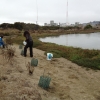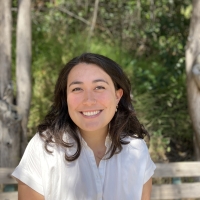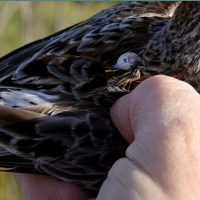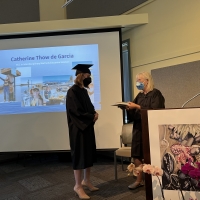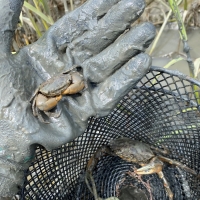Spotlight on Nyri Scanlon: Scientist and Curator Extraordinaire
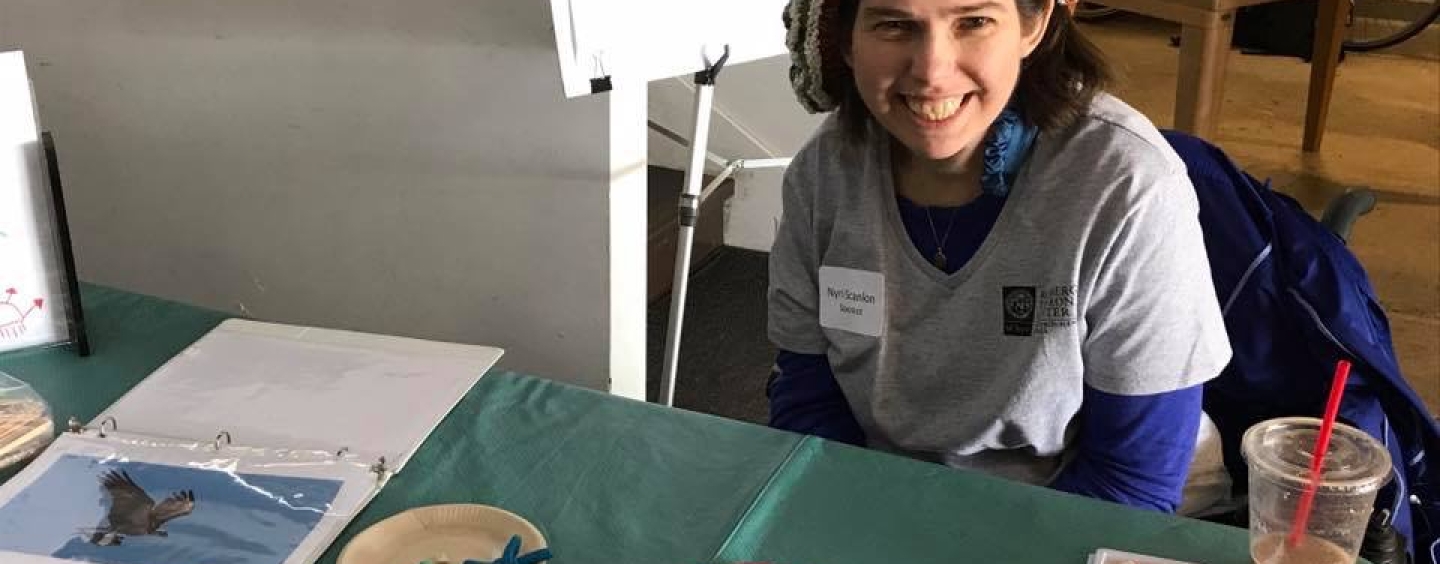
Nyri tabling for Discovery Day at the EOS Center.
Spotlight on Nyri
Growing up in Newport Beach, Nyri Scanlon and her grandpa were regulars of the glimmering coast. One day, hanging out at the docks, young Nyri observed a sea lion playing with local fisherman and even stealing fish out of their hands! She couldn’t believe that marine mammals could be as playful as the puppies we see on land and reflects on this warm memory of laughter and salty air as the spark that lit her passion for marine science to this day.
Since then, Nyri has dedicated her career to studying marine ecosystems and working with a wealth of organizations connecting the public with scientific research and promoting stewardship of sensitive habitats. Nyri has conducted research in collaboration with faculty from the Estuary and Ocean Science Center on a variety of topics ranging from the restoration of a rare tidal wetland plant, California seablite (Suaeda californica), to analyzing the recruitment of invasive settlers in the San Francisco Bay (including one species lovingly referred to as “sea vomit” or the “pancake batter tunicate”). She says her experience in research has earned her a counting-microscopic-organisms degree of patience and taught her the ins and outs of the scientific process first-hand.
Alongside her research accomplishments, Nyri also has a long history of volunteer and internship experience. Working with the California Academy of Sciences, she did a deep dive into hallmark scientific journals from a 1906 Galapagos Island exploration to link bird species information to their first documentation by early ecologists. Through her San Francisco Bay NERR position, Nyri has also interned with Access Adventure, a non-profit with a mission of providing accessible outdoor recreation and healing to people with disabilities through partnership with horses and horse-drawn nature tours. She is committed to creating opportunities for the differently-abled community to experience the beauty of Rush Ranch and the broader Bay Area ecosystem and plans to work with the new NERR Education Coordinator to do just that.
Nyri & the NERR Reference Library
Although Nyri’s interest in science began with her love for oceans, she has also fostered a deep appreciation for San Francisco’s estuaries. She loves the quiet complexity of China Camp and Rush Ranch including the layered ecological processes inherent to these environments and harbors a soft spot for the endangered (and unmistakably endearing) Salt Marsh Harvest Mouse. As a research assistant for the San Francisco Bay NERR, Nyri has flexed her curation muscles once more to compile a Zotero reference library that hosts hundreds of research articles published by scientists working with NERR data and estuaries. The reference library is available to anyone and everyone wanting to learn more about estuary science in the region or wondering why we should take steps to protect these sensitive habitats from threats including climate change and sea-level rise. All that one must do to gain full access to the database and publication PDFs is to email nyri@sfsu.edu!
If you find that the jumble of scientific jargon makes it hard to digest scientific articles, continue reading for three quick tips!
How to Read a Science Paper (and understand it too!)
- Read the abstract of the paper first. Research papers are written like recipes with distinct sections intended to hold specific information. The abstract serves as a snack-size summary of the entire paper including the Introduction, Methods, Results, and Discussion!
- Skip the methods and results. If you are not trying to replicate the study or are unfamiliar with the topic, these sections can act like a traffic-jammed road to Jargon Central. Even if you skip them, you will still be able to understand the take-home message of the article.
- Finish with the discussion. As a scientist, this is often the hardest section of the paper to write. It interprets the results of the study, adds context from previous work done by other researchers, and answers the question “So what?” If you are lucky, you might even find a “Summary” section at the bottom of the article that breaks down these conclusions even further.
